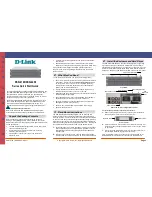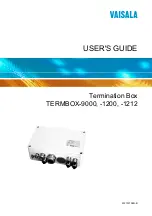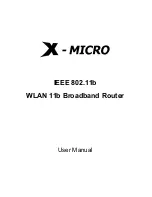
24 Port Ethernet Switch With Optional Fiber Port
Tyco Electronics
Page 4
Installation
Copper and Fiber Cabling Guidelines
1. The RJ-45 ports can be connected to unshielded twisted pair
(UTP) or shielded twisted pair (STP) cabling systems compliant
with the IEEE 802.3u 100Base TX standard for Category 5. The
cable between the switch and the link partner device (router,
hub, workstation, etc.) must be less than 100 metres long.
2. The fiber link on the optional multi-mode module must use
either 50 or 62.5/125 micron multi-mode fiber cable. You can
link two devices over a distance of up to 2 kilometres.
3. The fiber link on the optional single-mode module must use
8/125 or 9/125 micron single-mode fiber cable. You can link two
devices over a distance of up to 15 kilometres in full duplex
mode or 412 metres (1,352 ft.) in half-duplex.
4. The console port is an RS232 port and should not be used for
cable distances greater than 20 metres.
Desktop Installation
1. Locate the switch in a clean, flat and safe position that has easy
access to AC power. Ensure that there is sufficient clearance
around the switch to enable air circulation.
2. Fit the self-adhesive rubber feet to the underside of the switch.
Installing The Switch Into a 19” Rack
1. Identify the required locations and ensure that there is at least
10cm clearance at the front and rear of the switch to allow
cables to be accommodated.
2. Fit the supplied rackmount bracket on both side plates of the
switch using a screwdriver.
3. Locate the switch into the rack and align the holes in the
brackets with holes in the rack vertical strips. Secure the switch
using the supplied bolts.
Installing The Optional Fiber Uplink Module
1. Remove AC power from the switch.
2. Remove the two screws securing the front panel blanking plate.
3. Observe anti-static handling precautions and carefully fit the
plug-in module into the switch and secure it using the thumb
screws.




































